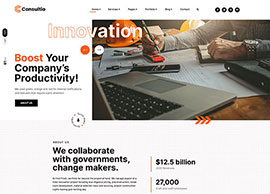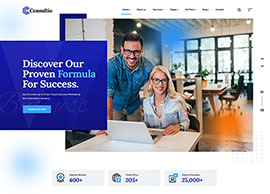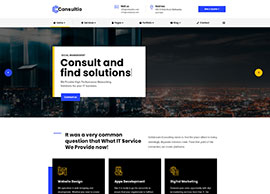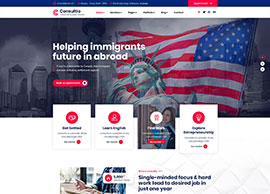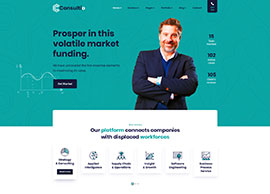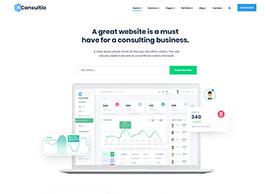What we learned from the USPS® Task Force Report is that in order to stay solvent, we will have larger rate increases. We see the evidence of this in the new rates going into effect on January 27, 2019. There are some very significant increases that will impact mailers greatly. The bright side is the more automation, technology and weight added to your items, the lower the increase will be.
For the past 19 years, I have been creating comparison charts for our clients that go over the changes in rates to show how it will affect budgets. The reason that I do this is that when the USPS® talks about a 2.5% increase, this is overall. Based on the type of mail you send, the increase could be higher or lower. You need to look at the class, weight, zone, density and special services required to see the true impact. Also, when you look at the new rate charts provided by the USPS, they typically will not show the level of detail needed (Previous and new rates, side by side) to see these differences.
The remainder of this article will look at the main classes of mail to break down the specific increases and decreases. Hopefully this will help you budget by seeing the impact of the most common services that you use today.
Here is a link you can use that will give you more details
First-Class Mail® Single Piece – -20% Decrease to 10% Increase


The price of a stamp is going from $0.50 to $0.55 which is a 10% increase! This is compared to metered letters which is increasing from $.47 to $.50 (6.4% increase). This is still the most significant savings ever offered in the US mailing industry because it means that by using a postage meter or PC postage, you will now save $0.05 per piece or 10%. Most discounts are tied to doing more work such as barcoding or sorting, where this is an automatic savings for just using a system to print postage that costs as little as $15 per month. They reduced the additional ounce rate from $.21 to $.15, so the price goes down significantly as items get larger. Regardless of if you use Retail or Metered mail, you should budget for a significant increase in this category because the majority of mail clients process is 1 ounce.
Flats will see the one-ounce rate stay the same at $1.00, but with the reduction in the additional ounce rate, as the items get heavier the rate goes down significantly.
First-Class Mail® Commercial – 0 to 3.1% Increase

The Commercial rates saw minimal to no increases with this rate change. Automation Letter rates are going up at about 1% with the highest sort levels seeing the greatest impact. Flats are increasing at 2-3%. Post Card rates are staying flat. It is interesting that the Presorted (Non-Automation rates) are staying basically the same while the Automation classes are having increases. This is counter to the typical increase where the USPS provides additional workshare discounts for mailers pushing for automation.

The biggest change in this category occurred a few years ago when they increased the weight limit for the Commercial Letter rates to 3.5 ounces. The goal was to increase the value of the mail piece allowing customers to add additional content at the same price.
When you look at the chart above and compare the rates of a 3-ounce Metered Letter at $0.85 to a Commercial rate at $0.383 it is a 52% savings! This is a big win for presort services that are now more valuable because of the savings they can provide. Also for flats, (9×12 or 10×13) consider folding those into 6×9 envelopes. The savings can be significant with these new rates and weight savings. A 3 ounce flat at $1.30 now could cost as little as $0.383 assuming it could be automated through in-house software or presort services.
Marketing Mail® (Formerly called Standard Mail) – .6 to 6% Increase

Marketing Mail® Letter rates are increasing at approximately 2% while Flats are increasing at 2-6%. Nonprofit rates seem to be increasing at similar percentages as well. If you were taking advantage of destination entry discounts, the Letter rate savings is decreasing by 9% where with Flats it is staying the same to increasing by 5% as you can see from the table below.

Priority Mail® – 3% Decrease to 10% Increase (Depending on Weight and Zone)

Priority Mail® is the most popular package service for the USPS which covers items weighing 13 ounces to 70LB’s and delivers in 1-3 days throughout the US. The rates are based on the weight and 9 zones which are determined by the distance you are shipping the item. They also have three different rate categories based on the type of customer:
- Retail – Rates that you get at the counter at the Post Office or through a Postage Meter.
- Commercial Base – Customers that use an approved PC Postage solution get significant discounts over Retail rates as an incentive to streamline the way packages are labeled, barcoded and data is transmitted.
- Commercial Plus – Customers that ship over 50,000 items per year can get additional discounts with an agreement with the USPS.
Highlights
- Retail rates are seeing the largest increases averaging 7%
- Commercial rates are seeing the lowest increase with -1 to 1% increases and flat rate items at 4%.
- Commercial Plus rates are now the same as Commercial Base rates with no additional incentive from a rate structure perspective.
- If you are running your Priority Mail® items at Retail rates using Click-N-Ship® or a postage meter, consider switching to a PC Postage solution that utilizes Commercial rates which saves 18% overall and ranges from 5-40% based on weight and zone.
Priority Mail® Express– 3 to 10% Increase (Depending on Weight and Zone)

Priority Mail® Express rates have increased slightly across all categories. Here are the highlights:
- Retail rates increased 8% overall but 6% for Flat Rate and less than 10LB items.
- Commercial rates increased 6% overall but 5% for Flat Rate and less than 10LB items.
Commercial Plus discounts have been eliminated and rates are the same as Commercial Base.
First-Class Mail® Package Service – 1 to 28% Increase

In the less than 1LB market, the USPS has a complete monopoly and you can see that they are rethinking why they are providing some of the discounts in this segment. The private carrier rates all start at 1LB where the USPS goes to the ounce. Think about the companies sending light parts that can be sent for around $3 with the USPS vs. the private carriers that could be 2-3 times that amount. We are seeing the largest increases in this segment with Retail rates going up 10-22% and Commercial rates increasing 7-19%. The biggest change is they have moved from flat rates to zone-based rates. This means items will get more expensive the farther away they are being sent. This will drastically effect mailers who send across country.
Additional Rate Change Items



Conclusion
To budget for this increase, you need to look at the type of items you are sending, and the weight and zones that are most common, to truly estimate the impact. We have developed a Microsoft Excel-based budget calculator that you can download for free that should help you better plan for next year. Some of the most popular USPS classes are going up at the highest rates but luckily there are ways to help mitigate this through automation and technology.









